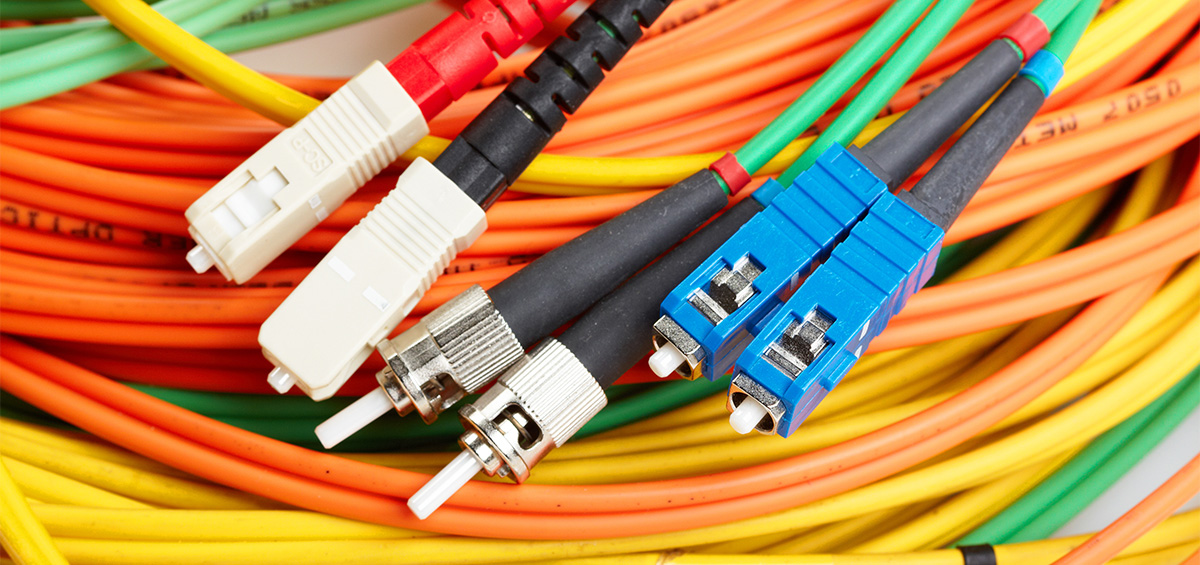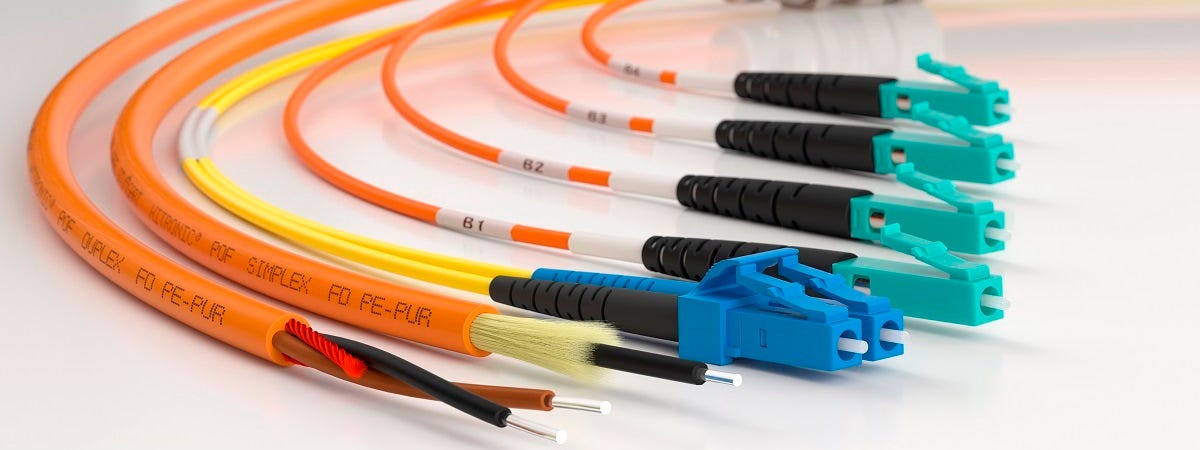Telecom networks rely on efficient fiber cables to transmit data. A single-mode fiber optic cable uses a narrow core to support high-bandwidth, long-distance communication. In contrast, multimode fiber optic cable features a wider core and suits short-distance applications. Choosing between single mode duplex fiber optic cable and multimode fiber cable depends on network demands, installation complexity, and budget.
Key Takeaways
- Single-mode fiber cables are great for long-distance communication. They can send signals over 40 kilometers without losing quality.
- Multimode fiber cables are better for short-distance use. They work well in local networks and data centers, covering up to 500 meters.
- Think about your budget and setup needs. Single-mode cables cost more and are harder to install. Multimode cables are cheaper and easier to set up.
Understanding Single-Mode and Multimode Fiber Optic Cables
What Is Single-Mode Fiber Optic Cable?
Single-mode fiber optic cable is designed for long-distance data transmission. It features a narrow core, typically around 8-10 microns in diameter, which allows only a single light mode to pass through. This design minimizes light dispersion, ensuring that signals travel farther without degradation. Telecom networks often use single-mode cables for high-bandwidth applications, such as connecting data centers or supporting internet backbones. The cable’s ability to maintain signal integrity over vast distances makes it a preferred choice for large-scale infrastructure.
What Is Multimode Fiber Optic Cable?
Multimode fiber optic cable is optimized for short-distance communication. Its core diameter, ranging from 50 to 62.5 microns, enables multiple light modes to propagate simultaneously. This characteristic increases the cable’s data-carrying capacity but limits its effective range due to modal dispersion. Multimode fiber optic cable is commonly used in local area networks (LANs), data centers, and enterprise environments where cost efficiency and shorter transmission distances are priorities. Its compatibility with less expensive light sources, such as LEDs, further enhances its affordability.
How Light Transmission Differs Between the Two
The primary difference lies in how light travels through each cable type. Single-mode fiber transmits light in a straight path, reducing signal loss and allowing for greater distances. In contrast, multimode fiber optic cable permits multiple light paths, which can overlap and cause signal distortion over long distances. This distinction makes single-mode fiber ideal for long-range, high-speed networks, while multimode fiber is better suited for short-range, cost-sensitive applications.
Comparing Key Features of Single-Mode and Multimode Fiber Optic Cables
Core Diameter and Light Modes
The core diameter is a defining characteristic of fiber optic cables. Single-mode fiber optic cables have a narrow core, typically around 8-10 microns. This small diameter allows only one light mode to travel through the cable, reducing signal dispersion and ensuring high precision in data transmission. On the other hand, multimode fiber optic cables feature a larger core, ranging from 50 to 62.5 microns. This wider core enables multiple light modes to propagate simultaneously, increasing the cable’s data-carrying capacity but also introducing modal dispersion.
Tip: The choice of core diameter directly impacts the cable’s performance. For long-distance, high-speed networks, single-mode fiber is the preferred option. For short-distance, cost-sensitive applications, multimode fiber optic cable offers a practical solution.
Distance and Bandwidth Capabilities
Single-mode fiber excels in long-distance communication. Its design minimizes signal loss, allowing data to travel over distances exceeding 40 kilometers without significant degradation. This makes it ideal for applications such as intercity connections and large-scale telecom networks. In contrast, multimode fiber optic cable is better suited for shorter distances, typically up to 500 meters for high-speed applications. While multimode fiber supports high bandwidth, its performance diminishes over longer distances due to modal dispersion.
Telecom networks must consider both distance and bandwidth requirements when selecting a cable type. Single-mode fiber provides unmatched performance for long-range applications, while multimode fiber is a cost-effective choice for local area networks and data centers.
Cost and Installation Complexity
Cost is a critical factor in choosing between single-mode and multimode fiber optic cables. Single-mode fiber is generally more expensive due to its advanced design and the need for precise light sources, such as lasers. Additionally, its installation requires specialized expertise, which can increase labor costs. In contrast, multimode fiber optic cable is more affordable and easier to install. It is compatible with less expensive light sources, such as LEDs, making it a budget-friendly option for many organizations.
Note: While single-mode fiber involves higher upfront costs, its long-term benefits, such as scalability and superior performance, often justify the investment for large-scale networks.
Performance in Different Telecom Environments
The performance of fiber optic cables varies depending on the telecom environment. Single-mode fiber is ideal for outdoor and long-distance applications, such as connecting cities or supporting internet backbones. Its ability to maintain signal integrity over vast distances ensures reliable communication. Multimode fiber optic cable, however, performs exceptionally well in indoor environments, such as data centers and enterprise networks. Its compatibility with short-distance applications and cost-effective components makes it a popular choice for these settings.
Telecom professionals must evaluate the specific requirements of their network environment. Single-mode fiber offers unparalleled performance for large-scale, high-speed networks, while multimode fiber provides a practical solution for localized, cost-sensitive projects.
Factors to Consider When Choosing Between Single-Mode and Multimode
Network Requirements: Distance, Bandwidth, and Speed
Telecom networks demand cables that align with their operational goals. Single-mode fiber optic cables excel in long-distance communication, supporting distances exceeding 40 kilometers without signal degradation. These cables are ideal for high-speed networks requiring consistent bandwidth across vast areas. Multimode fiber optic cables, on the other hand, suit short-distance applications, typically up to 500 meters. They provide sufficient bandwidth for local area networks (LANs) and enterprise environments.
Network planners must evaluate the required transmission distance and bandwidth capacity. For intercity connections or large-scale infrastructure, single-mode fiber offers unmatched reliability. Multimode fiber optic cable provides a cost-effective solution for localized networks where speed and distance requirements are moderate.
Budget and Cost Considerations
Cost plays a pivotal role in cable selection. Single-mode fiber optic cables involve higher upfront expenses due to their advanced design and the need for precise light sources, such as lasers. Installation costs also tend to be higher, as specialized expertise is required. Multimode fiber optic cables are more affordable, both in terms of material and installation. Their compatibility with less expensive light sources, such as LEDs, makes them a budget-friendly choice for organizations with cost constraints.
Tip: While multimode fiber optic cable offers immediate cost savings, single-mode fiber’s long-term benefits, including scalability and superior performance, often justify the investment for large-scale networks.
Installation and Maintenance Needs
Installation complexity varies significantly between single-mode and multimode fiber optic cables. Single-mode cables require precise alignment and advanced equipment during installation, which increases labor costs. Maintenance also demands specialized tools and expertise to ensure optimal performance. Multimode fiber optic cables are easier to install and maintain. Their wider core diameter simplifies alignment, reducing installation time and associated costs.
Organizations must assess their technical capabilities and resources before choosing a cable type. For networks with limited technical expertise, multimode fiber optic cable provides a practical solution. For high-performance networks, investing in single-mode fiber ensures long-term reliability.
Future Scalability and Upgrades
Scalability is a critical factor for growing telecom networks. Single-mode fiber optic cables offer superior scalability, supporting higher bandwidths and longer distances as network demands increase. Their compatibility with advanced technologies ensures seamless upgrades. Multimode fiber optic cables, while cost-effective, have limitations in scalability due to modal dispersion and shorter transmission distances.
Network planners should consider future growth when selecting a cable type. Single-mode fiber provides a future-proof solution for expanding networks, while multimode fiber is suitable for projects with stable, short-term requirements.
Quick Comparison Table: Single-Mode vs. Multimode Fiber Optic Cable
Side-by-Side Comparison of Key Features
The table below highlights the key differences between single-mode and multimode fiber optic cables, helping telecom professionals make informed decisions:
| Feature | Single-Mode Fiber | Multimode Fiber |
|---|---|---|
| Core Diameter | 8-10 microns | 50-62.5 microns |
| Light Transmission | Single light mode | Multiple light modes |
| Distance Capability | Over 40 kilometers | Up to 500 meters |
| Bandwidth | High, suitable for long-distance applications | Moderate, ideal for short-distance networks |
| Cost | Higher upfront cost | More affordable |
| Installation Complexity | Requires specialized expertise | Easier to install |
| Typical Light Source | Laser | LED |
Note: Single-mode fiber is optimal for long-distance, high-performance networks, while multimode fiber is better suited for cost-sensitive, short-range applications.
Typical Use Cases for Each Cable Type
Single-mode fiber is commonly used in large-scale telecom networks. It supports long-distance communication, making it ideal for intercity connections, internet backbones, and data center interconnects. Its high bandwidth and scalability also make it a preferred choice for future-proofing networks.
Multimode fiber optic cable, on the other hand, is widely deployed in local area networks (LANs) and enterprise environments. It is particularly effective in data centers, where short-distance communication is required. Its affordability and compatibility with cost-effective light sources make it a practical solution for organizations with budget constraints.
Telecom professionals should evaluate their network’s specific needs to determine the best fit. For long-range, high-speed applications, single-mode fiber offers unmatched reliability. For short-range, cost-efficient projects, multimode fiber optic cable provides an excellent alternative.
Single-mode fiber delivers exceptional performance for long-distance, high-bandwidth networks. Multimode fiber offers a cost-effective solution for short-range applications.
Tip: Evaluate your network’s distance, bandwidth, and budget requirements before deciding. For expert advice, contact Dowell. Eric, Manager of the Foreign Trade Department, is available via Facebook.
FAQ
1. What are the main differences between single-mode and multimode fiber optic cables?
- Core Diameter: Single-mode has a smaller core (8-10 microns), while multimode has a larger core (50-62.5 microns).
- Distance: Single-mode supports longer distances; multimode is better for short-range applications.
Tip: Choose single-mode for long-distance, high-performance networks and multimode for cost-effective, short-distance setups.
2. Can single-mode and multimode cables be used together in the same network?
No, they cannot be directly connected due to differences in core size and light transmission. Specialized equipment, like mode-conditioning patch cords, is required for compatibility.
3. Which industries commonly use single-mode and multimode fiber optic cables?
- Single-Mode: Telecom, internet backbones, and intercity connections.
- Multimode: Data centers, local area networks (LANs), and enterprise environments.
Note: For tailored advice, contact Dowell. Eric, Manager of the Foreign Trade Department, via Facebook.
Post time: May-14-2025


